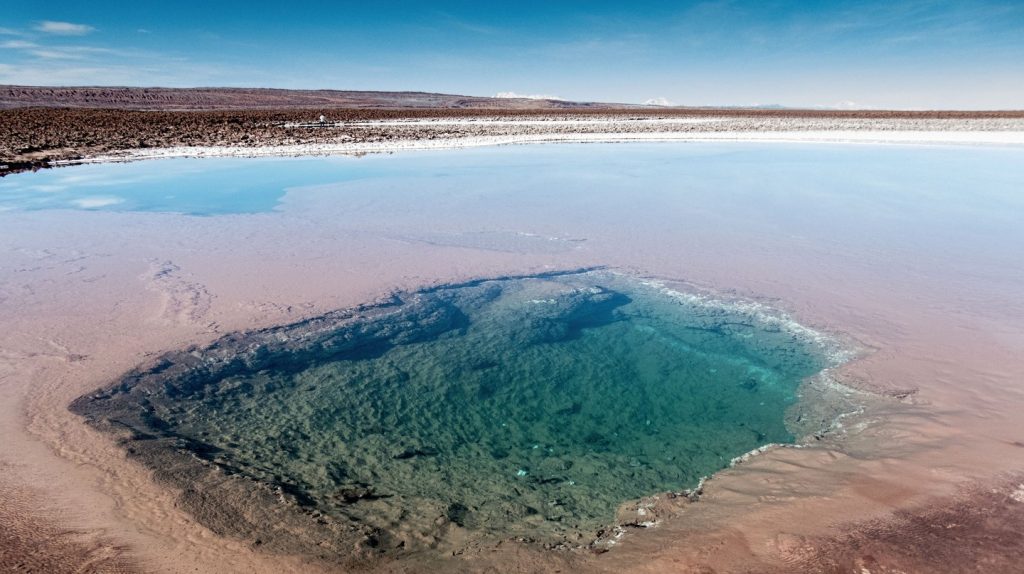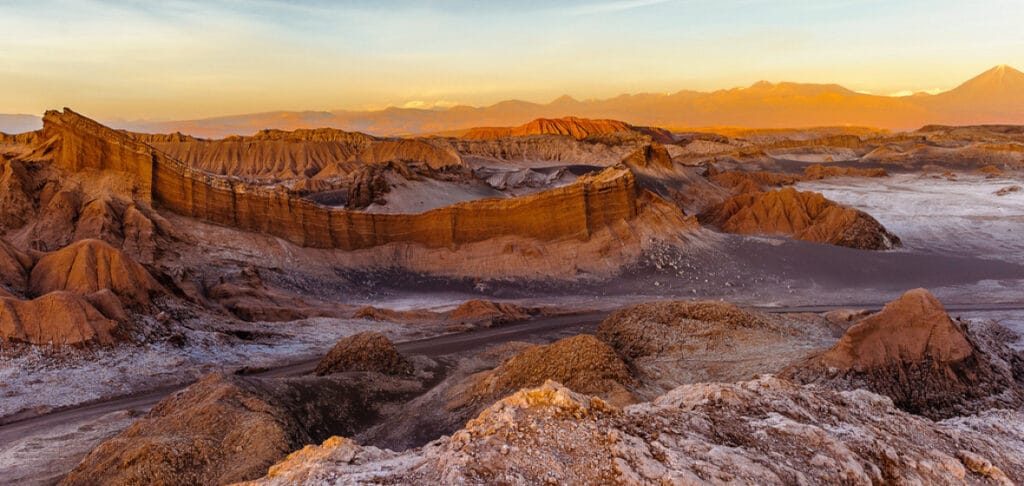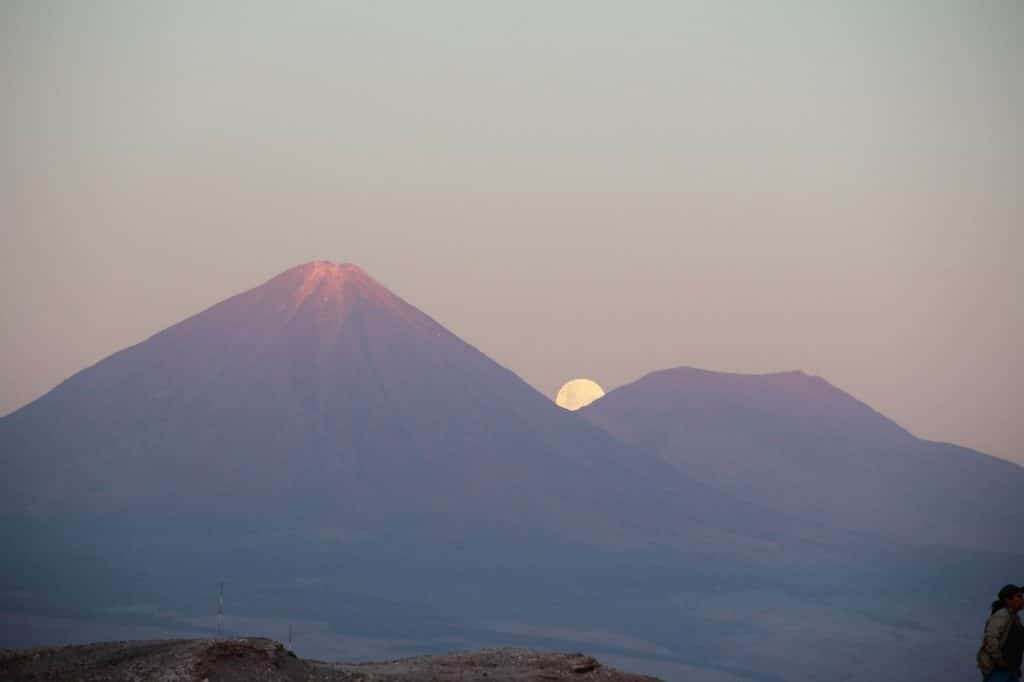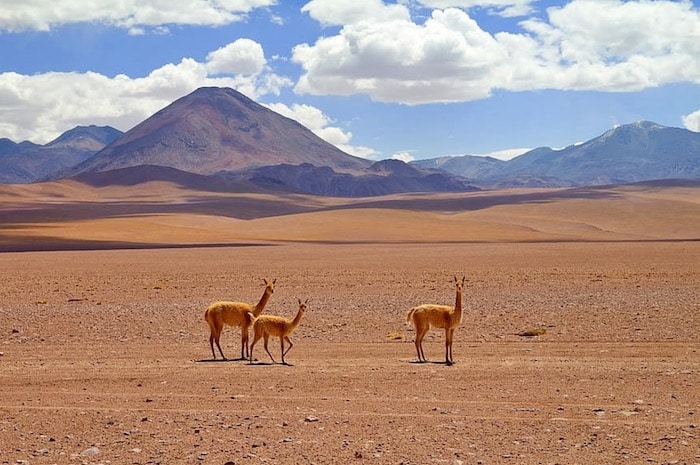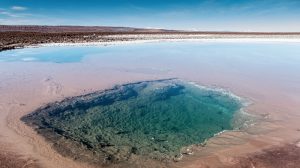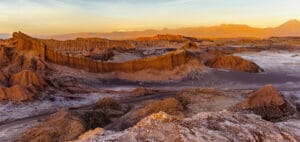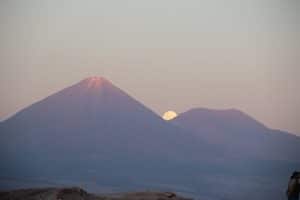San Pedro de Atacama is a city in northern Chile. It is a very popular destination for Chilean tourists and international visitors alike. Visitors come in large numbers, to use the city as a springboard to the incredible landscapes that surround it. Where is San Pedro de Atacama .
Most of the attractions are part of the Los Flamencos National Reserve, perhaps the most varied and amazing national park in Chile.
Prices in any of the quiet bars and restaurants compare well with those in Santiago (Chile’s capital). Still, it is quite an expensive location, as it is one of the three most popular destinations in Chile, along Torres del Paine and Easter Island. It is noteworthy that many roads are not paved, the buildings are one-story and the city looks a bit like a western movie. It is not a resort.
Where is San Pedro de Atacama
Ancient cultures and travelers from all over the world intermingle in this ancient town of dirt roads and adobe houses. At this starting point for an unforgettable journey you will discover the most impressive views of the planet in the midst of its infinite beauty. Travel through the Atacama Desert, the land of the indigenous peoples!
Visit the old square and learn about the customs of its inhabitants. Let yourself be carried away by the slow pace of life here, where no one seems to be in a hurry. Be sure to visit the old church. Enjoy all the local art and take a stroll through the Craft Village workshops to discover how they keep their traditions alive.
The fascinating tours will allow you to explore the abundant attractions of the region: active geysers, lagoons famous for their intense colors and impressive salt flats that will amaze you. If you are looking for a good adventure, travel through the desert on a bicycle, slide down the dunes on a sandboard.
Finish this trip full of sensations by indulging in the local and international gastronomy of the area’s restaurants, and enjoying the massages and thermal waters of the recreational complexes. Once night falls, there is nothing better than enjoying the endless number of stars twinkling in the sky of the driest desert in the world.
What to see in San Pedro de Atacama
The best hotels in San Pedro de Atacama
How to get from Calama to San Pedro de Atacama
San Pedro de Atacama, the oldest town in Chile
Atacama Desert
Tatio Geysers-Whereis San Pedro de Atacama?
Located at 4,200 m above sea level and 100 km from the city, these are some of the highest geysers in the world.
world. It is also the third largest geyser site on Earth, with more than 80 active geysers. Most agencies travel there at 4 a.m. to arrive at dawn. The spectacle is hard to forget, even if the geysers themselves are smaller, the backdrop, the lighting and the great variety are amazing.
You can usually see them from the early stages of dawn, an hour before sunrise, until the sunlight bathes them completely. The best time to take pictures is at the exact sunrise, but other lighting can also create wonderful photographs.
All reputable travel agencies include breakfast for their guests. If you book one that does not, then you have been scammed. If you have rented a car, please note that the site closes at 5:00 pm.
On the way back, it is typical to encounter wild vicuñas, an endangered Andean camelid that is highly protected in Chile. They were rescued from the brink of extinction thirty years ago.
Vicuñas in the area are accustomed to human presence and will tolerate the arrival of tourists about twenty meters away; more, and they are likely to flee. Be extremely respectful of regulations, as many guides and drivers may even react aggressively if you disturb the animals in any way.
A regular stop is the wading of the Putana River, a spectacle that for some even surpasses the geysers themselves. It is home to many different species of birds, and it is perfectly possible to get very close to them; giant coots (fulica gigantea) are especially indolent.
Winter has the highest number of birds, with more than ten different species coexisting on site at peak migration, but temperatures are harsh.
There is also the possibility of seeing a viscacha or two (lagidium viscacia), an amusing cross between a bunny, a squirrel and a kangaroo. However, they are very shy and, if you don’t arrive among the first visitors, they will usually have disappeared.
In the background, to the east, is the Putana volcano, an active mountain with seven small smokes. Finally, there is usually the option of visiting one of two locations. The first is Machuca, an abandoned Altiplanic village that used to live from sulfur mining. Most of the regular tours stop here.
Today, you will find some locals there, grilling anticuchos made with llama meat.teas, soft drinks and empanadas are also offered. The meat is of questionable origin, with some wild theories about its origin floating around. Ask your guide to laugh. However, it is quite safe to consume, as the sanitation is decent. Just after leaving Machuca, it is common to see llamas grazing in a beautiful meadow.
After this pasture is a micro-sized salt flat, where you can see vicuñas and James’s flamingos (the latter only in summer). The other location is Puritama (see below). If you plan to go, please note the following:
- Temperatures can be bitterly cold: -15°C is common from June to August, and snow causes the site to close regularly, while in summer it rarely drops below -5°C. It is essential to wear gloves, a hat and preferably two layers of socks, along with a very warm jacket. After sunrise, the cold quickly subsides and becomes bearable. Once you get to Machuca, the heat can be stifling. Prepare accordingly.
- The altitude, along with a steep and winding road, can easily cause altitude sickness. Almost all agencies claim to carry an oxygen cylinder on board; this is false. They bring a can with compressed air to one atmosphere, but it does little more than act as a placebo. See the “Stay Healthy” section for tips on how to prevent and improve disease.
- The road was fully paved at some point in the distant past, but now some parts are in poor condition, especially from Machuca to the end. Infrastructure improvements are being made to make this route more accessible, but as of 2018 it is fine in a 2WD vehicle, it will just be a little bumpy.



